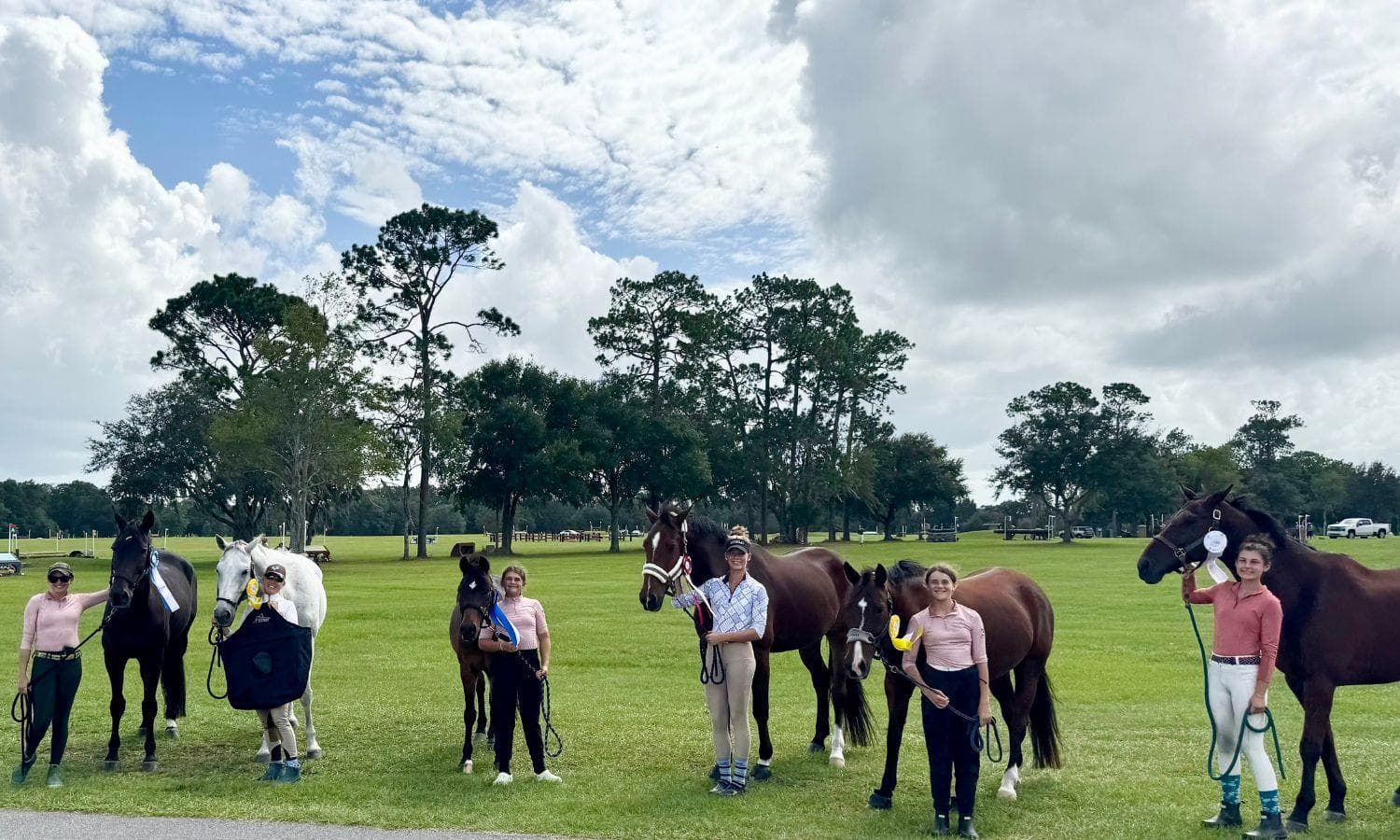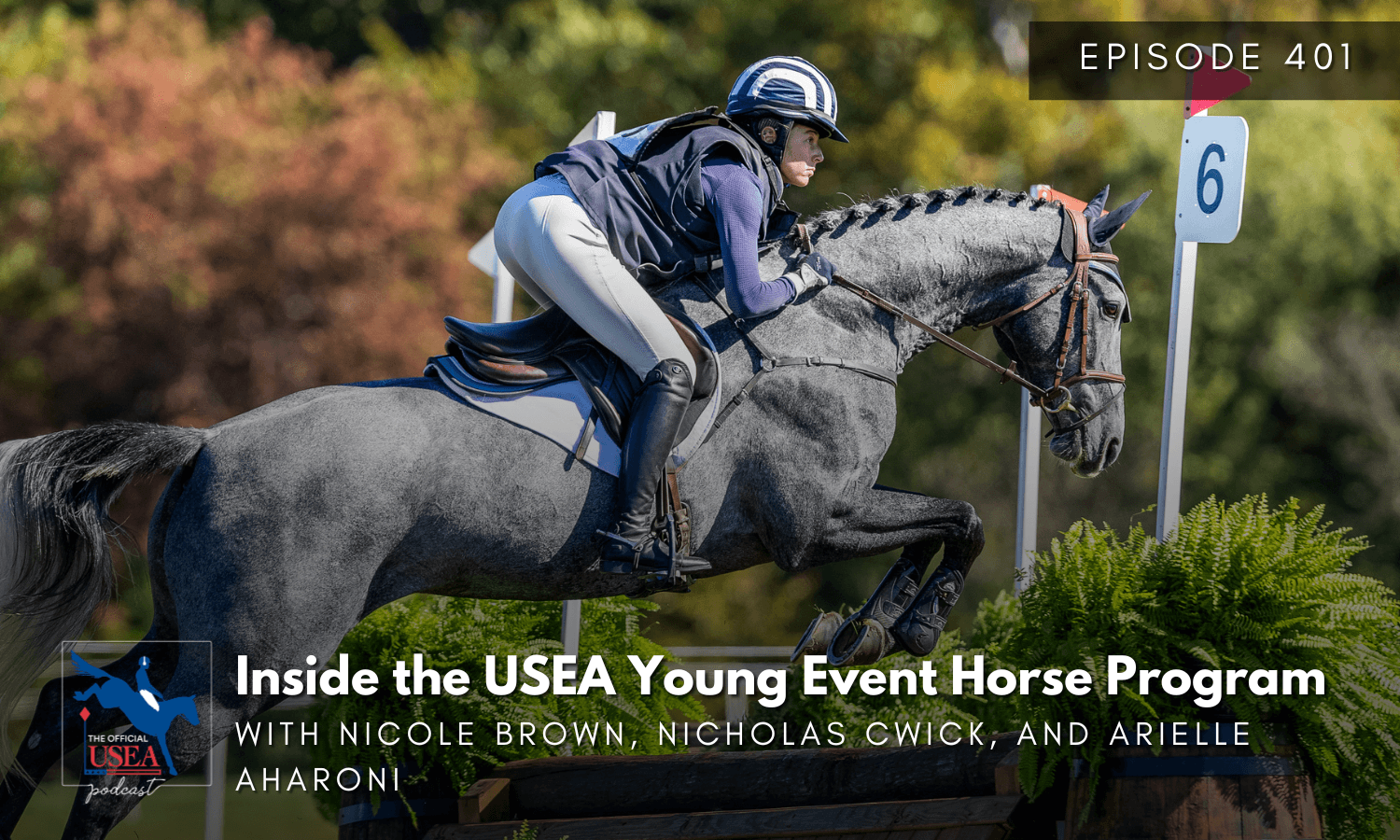Dorothy Crowell’s Tips to Taking on the USEA Classic Series
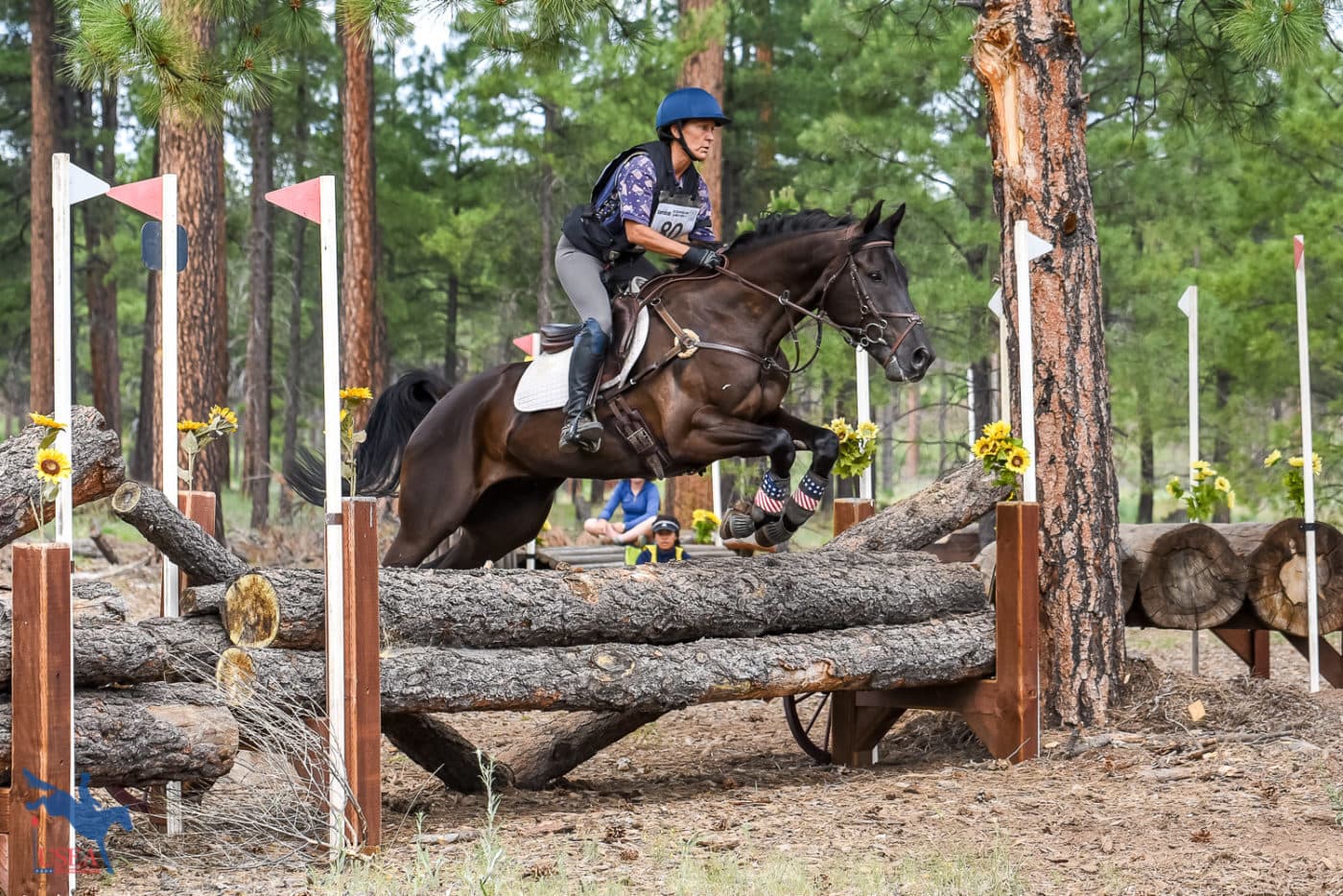
Have you ever wondered what it would be like to compete in a traditional long format Three-Day Event? Can you imagine the thrill of three additional phases leading into cross-country? In the early 2000s, eventing began to shift away from long format events and toward modern short-format competitions. Not all is lost though! The United States Eventing Association (USEA) created the USEA Classic Series to give riders a taste of the old school experience. These competitions preserve eventing’s history and allow riders at the Beginner Novice through Preliminary levels to take on the challenge of traditional long format events.
‘Cross-country day’ at a typical horse trial is ‘endurance day’ at a USEA Classic Series Event. Endurance day includes three additional phases that you won’t see at traditional horse trials:
- Phase A: Roads and tracks (walking and trotting to warm up);
- Phase B: Steeplechase (galloping over about five to seven steeplechase fences); and
- Phase C: Roads and Tracks (walking and trotting as a cooldown)
And you already know and love Phase D—that’s cross-country.
Given the additional phases and other added aspects like the vet box and horse inspections, USEA Classic Series Events can seem daunting at first. Pair that with some new rules and a heightened need for proper preparation, and you may conclude it’s simply too tall a task. Dorothy Crowell to the rescue!
Dorothy is a 5* International event rider who took the eventing world by storm with her OTTB gelding Molokai during the long format days. In 1994, Dorothy and “Mo” won a silver medal at the World Equestrian Games in Germany—one of several career highlights for the pair. Dorothy was born and raised in Lexington, Kentucky and Mo was Kentucky-bred, so it was fitting that Mo’s final competition happened at the inaugural Rolex Kentucky 3-Day Event in 1998. Mo was the only horse to go double clear on cross-country, and he and Dorothy finished in 2nd place and received the USEF Pinnacle Trophy for being the highest placed American pair. Mo was later inducted into the USEA’s Eventing Hall of Fame.
“All Molokai’s successes came in the traditional long format in which, due to his Thoroughbred breeding, he excelled. He truly deserved his place in history having served his rider and his country well.” (USEA’s Eventing Hall of Fame, Molokai)
Ride iQ, the audio-focused mobile app that transforms schooling rides, hosted Dorothy for “Office Hours” to give you the insights you need to take on a USEA Classic Series Three-Day Event with confidence! If you think it may be fun or if you’d like to get in on the action as a groom or volunteer, read on!
Know the Differences
“The magnitude of what you’re doing requires homework. [..] Anytime you’ve done the homework and then you go and you are successful, it is that much more fulfilling. I think that is huge.”
Compared to a horse trial, some of the differences of a USEA Classic Series Event are:
There are three additional phases that are combined with the cross-country phase to make up ‘endurance day.’
- You will be riding in competition for about an hour in total. The roads and tracks phases, phases A and C, can be anywhere from 25 to 50 minutes combined depending on the specific competition and the level you’re competing (see the Specification Chart for more details).
- There are three horse inspections during competition: (1) before dressage, (2) after Phase C in the 10-minute box, and (3) before show jumping. The first and third inspections include a proper jog-up to demonstrate soundness. A vet will also examine your horse after cross-country and clear them to return to the stable when appropriate.
- The cross-country course will typically be championship-level difficulty.
- Each level of USEA Classic Series Events have their own unique Minimum Eligibility Requirements (MERs), which are achieved at USEA horse trials.
- There are often educational sessions immediately before or during the competition to make sure you have the information you need.
“What I usually say is, ‘There’s just a whole lot more ways in which you can get eliminated.’ But that’s why we’re there! We’re all there to try really hard to help you navigate and have the best time with your horse.”
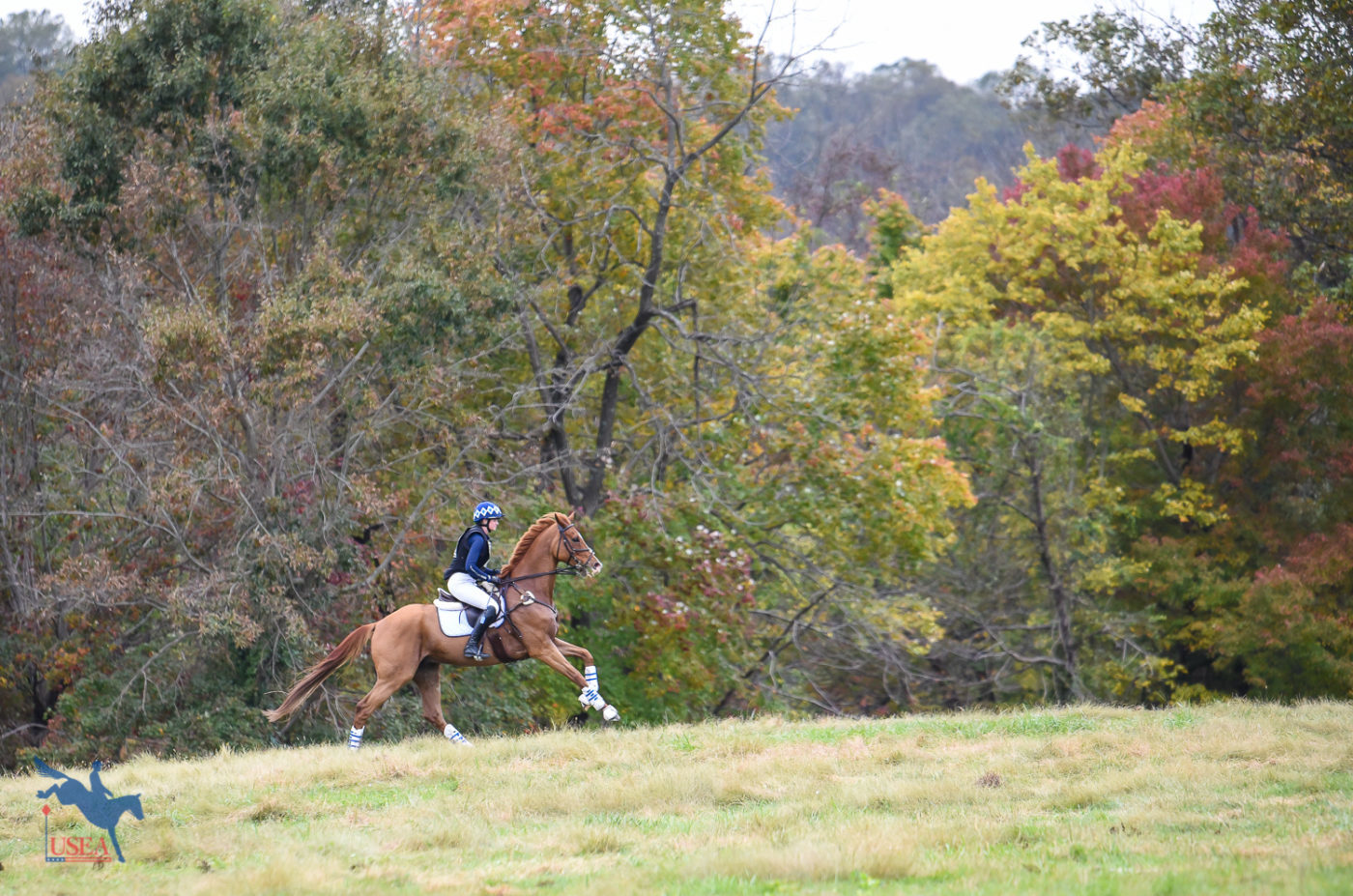
Develop a Plan
You may be able to add an additional horse trial to your show schedule on a whim, but that doesn’t work for USEA Classic Series Events. The USEA Classic Series Events require months of thoughtful planning and preparation. Your riding, shoeing, veterinary, and competition schedules should be synced up with an upcoming USEA Classic Series Event.
“You are trying to make your horse peak at the three-day.”
The first step is to sit down with your coach three to four months ahead of the event. Together, you should develop a progressive conditioning and competition schedule. Get familiar with your horse’s fitness by tracking their temperature, pulse, and respiration (TPR) after each conditioning ride. It’s important to note how long it takes your horse to recover—that’s a good indicator of fitness and will be a helpful way to gauge how they’re doing in the vet box on endurance day. You should also determine and practice your horse’s cross-country aftercare before you arrive at the event. Figure out what’s best for your horse, maybe that’s icing and poulticing, and start implementing that after conditioning days or cross-country schools.
Next, talk to your farrier and develop a shoeing schedule by working backward from the event date. Typically, your horse should be shod about 10-14 days prior to cross-country day. Ask your farrier to make you extra shoes at the final shoeing before the competition so you have something to replace a shoe that comes off at the show. You should also talk to your veterinarian and plan your horse’s vaccination and maintenance schedule accordingly—you don’t want your horse getting shots a week before the competition.
“It’s really a matter of organizing all of that, and then understanding that none of it will go according to your plan. You have to be ready to shift because that’s what horses do.”
Navigating Endurance Day
Once you’ve made it through the months of planning, preparing, and conditioning, you’ll find yourself at endurance day. The atmosphere is electric, and your horse is fit and ready to go. Here’s what to expect:
Phase A: Roads and Tracks
There is no need for a traditional walk, trot, canter, or jumping warmup before Phase A. Roads and tracks will be your warmup.
“Literally, once you feel comfortable with it, you can show up five minutes before your start time because you will be starting from a walk. You can walk through the flags and smile and say ‘thank you’ to the judge, and then pick up a trot.”
Well, that’s certainly different!
“It’s measured for 220mpm, which is an average trot pace. A horse will usually do a kilometer in about 4 minutes at that pace. If you can, beforehand, get your wheel and measure out a kilometer somewhere […] and trot it and see how quickly your horse trots a kilometer. That will give you a little better idea about what you’re doing. ”
There is an optimum time during this phase, anywhere from ten to twenty minutes, and you’ll incur 1 penalty point for each second that you’re over the optimum time (compared to 0.4 penalty points per second over on cross-country). There are no faults given for going too fast on Roads and Tracks.
“The concept is it is an endurance test, so if you come in too fast you are unnecessarily using up your horse and you will undoubtedly pay that price later on when they need that energy on course.”
Phase B: Steeplechase
The first fence you jump in the competition will be a brush fence on steeplechase.
“If you’re doing this for the first time or your horse is doing it for the first time, you need to ride that steeplechase fence like it’s a cross-country fence, aggressively. […]”
Once you and your horse get your bearings over the first couple of steeplechase fences, you may be able to settle into true steeplechase mode. The fences are forgiving and allow for less setup than cross-country fences.
“A proper steeplechase ride, you do minimal. You literally use your body to say ‘hey, you need to change your balance.’”
The speed is usually set to the cross-country speed at one level above the level you’re competing. In other words, if you’re competing in a Training Classic 3-Day, the steeplechase speed will be 500-520mpm, which is a typical Preliminary cross-country speed.
“If you want to know if your horse is fit enough, you want to technically have them fit enough to do the level above. So, if you’re doing a Novice Classic, you want to have your horse fit enough to do a training level horse trial.”
When it goes well, steeplechase instills confidence and establishes partnership between the horse and rider. A forward and harmonious steeplechase ride is an exceptional precursor to a positive experience on cross-country.
“That’s why you hear so often people come back from their first USEA Classic Series Three-Day saying it was the best cross-country they’ve ever had. There’s a reason it was setup this way back in the day.”
Phase C: Roads and Tracks (Again)
The purpose of Phase C is to cool your horse down with an active recovery. Phase C is usually set at 160mpm, which is a mix of walk and trot. Dorothy has yet to see Phase C in a USEA Classic Series Event set above 160mpm, but per the USEA Classic Series Guidelines (a very handy and comprehensive guide!), the speed can be set up to 220mpm.
“The course itself is measured and marked, so when you get to the first kilometer you can check your watch.”
Many people will write the times they want to be to certain markers on their arm and check their progress along the way. Dorothy shared a pro tip: she uses a medical armband holder on her forearm and puts an index card with the info she needs in there. That way, the numbers won’t smudge due to rain or sweat.
And if you’re concerned about learning the route for Phases A and C, we have awesome news: you’re normally allowed to hack the route before the competition!
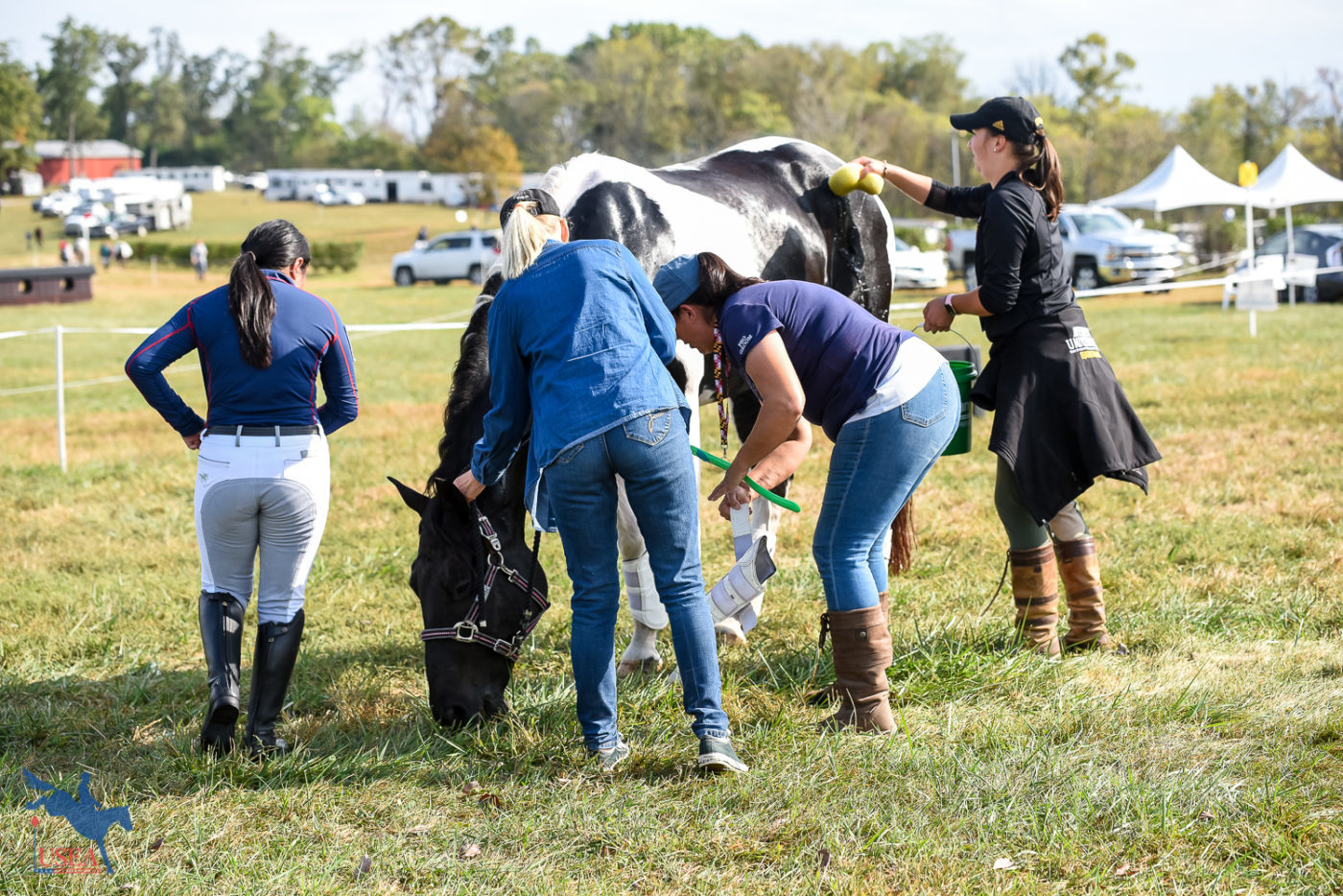
The Ten-Minute Box (AKA the Vet Box)
If you’re planning to do a USEA Classic Series Event, start packing a bin for the vet box now. Having your bin ready will help mitigate stress closer to the event. You want to have an extra of everything - anything that’s on your horse or on your body including things like extra contacts or glasses - should ideally have a spare counterpart in your vet box.
“I have blinked in a rainstorm and my contact came completely out. Actually, that happened at the Rolex Kentucky Three-Day Event.”
Dorothy’s recommended vet box contents:
- The extras: helmet, gloves, whip, shoes for your horse, studs, girth, stirrups, stirrup leathers, bridle, bell boots, galloping boots, etc.
- The cool down tools: four 5–7-gallon wash buckets with a sponge and scraper in each. Also have an easily identifiable bucket dedicated to drinking water. Pro tip: If it’s hot, have a plastic pitcher to pour water over your horse–it’s the easiest way to get a high volume of water on your horse quickly.
- A rain sheet or tarp: your groom will set up your things before you arrive at the box. They should spread the tarp out and take everything out of the box and put it onto the tarp. That way, it’s all easy to see and find.
- Your horse’s spare shoes along with the studs laid out for the front and hind so you can quickly get the correct shoe and corresponding studs if needed.
In the vet box, your groom should set up a strip for your horse to walk into with two water buckets on each side and the drinking bucket in the front. You can set up your spot in the vet box early in the day or even the night before. You want to stake out your spot and be ready to go ahead of time.
Curious what happens during the 10 minutes? Here’s the approximate series of events in the vet box:
- You arrive at the box. The vets will approach you and take your horse’s TPR. You’ll stand away from the horse while this is happening. For everyone’s safety, nobody else should touch the horse while the vets are working on them.
- Your groom takes your horse.
- You ask your assigned timer how long you have left in the box.
- You ask your veterinarian if your horse’s TPR is looking great or normal or not as good as it should be. That will dictate how aggressively you cool your horse.
- Unless it’s incredibly hot, don’t take the saddle off because it takes too long. Run the stirrups up and put a towel over the saddle. Loosen the girth. From there, the process is rinse, scrape, walk, repeat.
- After about 4 minutes, the vets will come back to take your horse’s TPR again.
- You’ll jog your horse for the vet.
- Rinse your horse again if needed and if time allows.
- At 3 minutes before your start time, you’ll adjust your tack.
- At 2 minutes to go, you’ll get back on and head toward the box.
“Bim, bam, boom. It happens quick. And that’s if nothing goes wrong. It’s when something goes wrong that it gets kind of interesting.”
If you’re not a professional, you don’t likely travel with a groom, and you might be wondering how riders go about recruiting a groom for the vet box.
“I have people raise their hands if they’re there without a groom. […] Usually, we’re able to team up so somebody who goes earlier in the division will pair with somebody who goes later. I also pull in all the extra horse people I can find.”
Ideally you have three people in the vet box with you – one person at your horse’s head and one on either side. That’s the perfect situation, but it’s not likely for an amateur to be able to make that happen. If you have one person, that can work. If you’re shorthanded, let the organizers or educators know that you need some help.
“You want [your grooms] to be very efficient, but very quiet because the whole idea is to bring the horse’s pulse and respiration down, not jazz them up.”
Phase D: Cross-Country
Once the vets clear your horse to go, you’ll be on your way to the first phase of the day that is familiar: cross-country!
“I tell people to be ready because the last time your horse came out of the box he got to run and jump over those steeplechase fences, so he’s going to be pretty encouraged to go forward at this point.”
As was mentioned above, you’ll see the vet again at the end of Phase D. They’ll decide when the horse is ready to return to the stable or if the horse needs any immediate treatment. This vet doesn’t have the authority to eliminate competitors but is required to report any doubtful cases to the ground jury and veterinary delegate.
Cross-Country Aftercare
After all the hard work of endurance day, your next big job presents itself: taking care of your horse so they’re sound for the jog-up the next morning.
Hopefully, you and your vet or coach decided on a plan for cross-country aftercare ahead of time, and you’ve practiced that routine several times. Aftercare will probably include icing, poulticing, and walking.
“Take them out for a nice long walk, maybe a roll. I hear so many people say, ‘Don’t roll! You’re supposed to stay clean!’ The best thing your horse can do is roll! Let him get out there and roll!”
The next morning before the jog, you should take your horse on another long walk or even do a light flat school depending on what you’re dealing with and what will be most helpful. The educators at the event are available to watch you jog and give you advice during this time, too.
Once you’ve passed your jog, you’ll be onto show jumping and onto the finale of your USEA Classic Series Three-Day Event!
Hopefully Dorothy’s insights have demystified the USEA Classic Series Three-Day Events and piqued your interest in participating! If that’s the case, check out the list of 2022 USEA Classic Series Events.
If you’d like to listen to the full conversation with Dorothy, you can do so on Spotify or Apple Podcasts.
Curious about Ride iQ?
Ride iQ is the first audio-focused training platform for equestrians that offers something completely new: the opportunity to get on-demand, listen-while-you-ride instruction on your schooling days. The private Ride iQ mobile app for iOS and Android features 300+ lessons with options suitable for equestrians at every level. Ride iQ features top coaches across hunter/jumpers, eventing, and dressage including Leslie Law (British eventer, individual gold medalist), Lauren Sprieser (Grand Prix dressage rider), Doug Payne (Olympic eventer, Grand Prix jumper), and several others. Membership is $29.99/month and every membership includes a 2-week free trial. Visit Ride-iQ.com for more information or download the Ride iQ app to try it for free.

